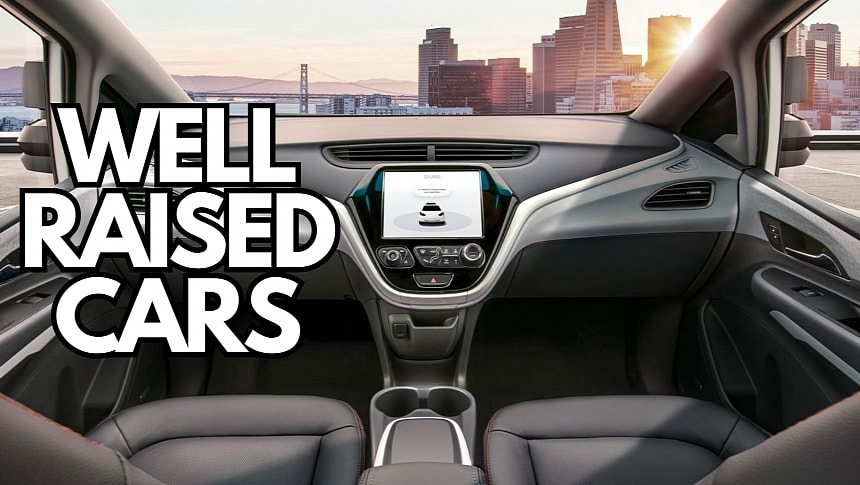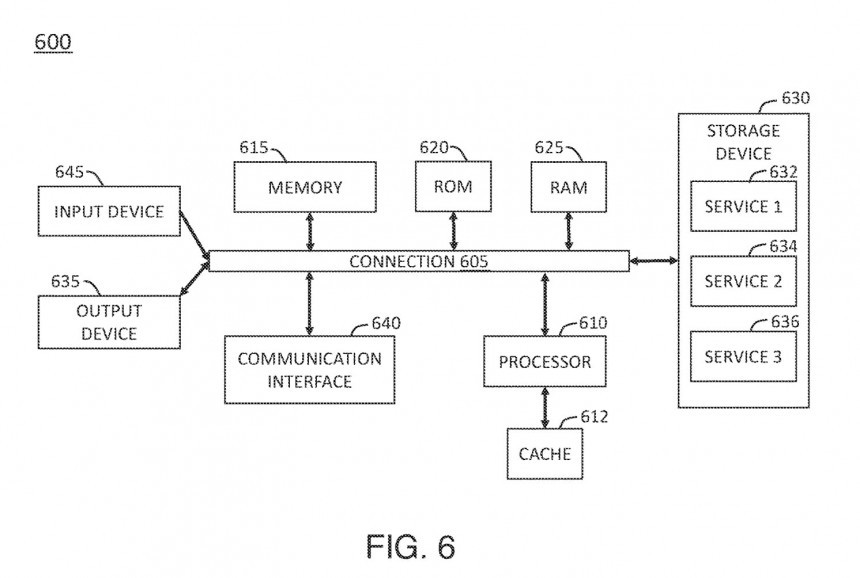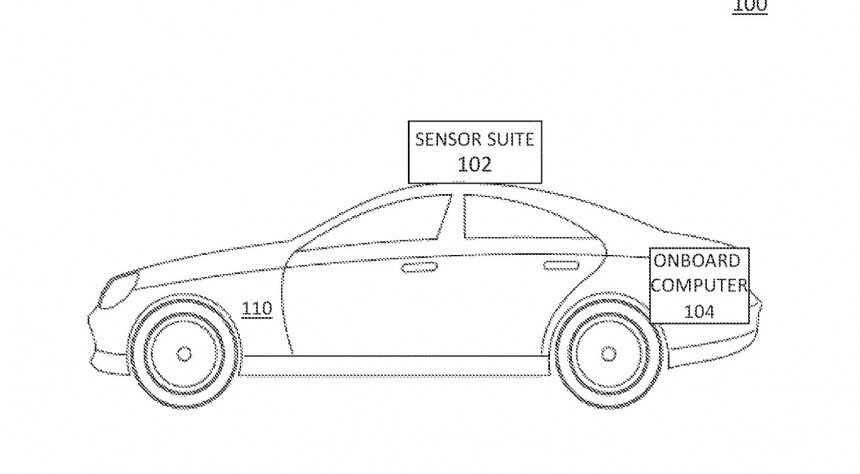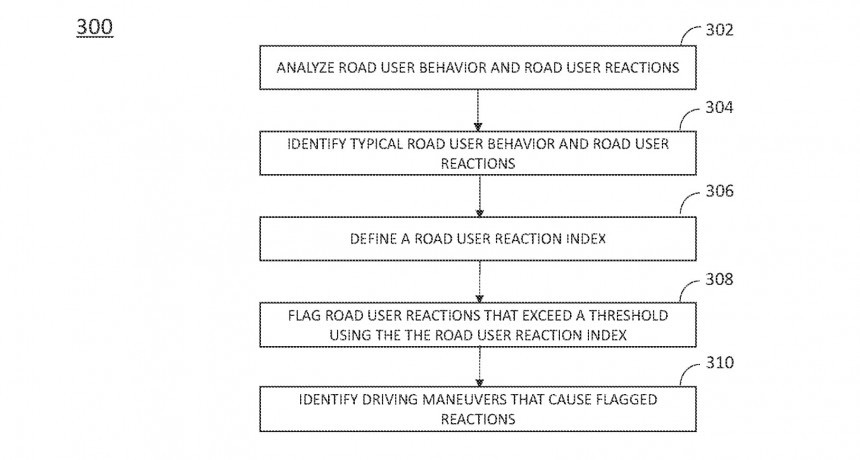When it's not making customers angry by removing the features they love the most, General Motors is heavily investing in its future, trying to pave the way for a future where self-driving cars and autonomous vehicles make more sense.
A recent patent application proves The General is aware that bringing autonomous vehicles to the road can't be a smooth process.
For one thing, self-driving vehicles would become part of the problem that we call "nightmare traffic," sometimes reacting in unpredictable ways. Whether it's hard braking or a sudden maneuver to avoid an obstacle, a self-driving car would face the same reaction that a human driver occasionally gets today: the middle finger.
General Motors believes this unfortunately common reaction is part of what it calls road user frustration, and its goal is to determine whether self-driving cars generate it and how it can eventually prevent it.
A patent application called "automated method to detect road user frustration due to autonomous vehicle driving behavior" describes how GM's self-driving cars (or any autonomous vehicles if someone else licenses the tech) can determine if its maneuvers cause frustration for the other motorists on the road.
The General starts by saying that in most occasions, self-driving cars react in the same way as human drivers, especially when they try to "avoid dangerous or difficult routes, and perform other navigation and routing tasks." The company says there's currently no way to determine how self-driving cars impact other drivers.
As most of us discovered the hard way, motorists can express their frustration in many ways, starting with the aforementioned middle finger, continuing with the excessing honking, and ending with other hand gestures, facial expressions, or brake checks. Nobody likes these aggressive and violent reactions, but GM says that if an autonomous car detects them, it can try to determine the maneuver that caused them and eventually find a way to prevent the trigger from occurring.
If you wonder how a self-driving vehicle would be able to detect road user frustration, it all comes down to the hardware already available on such an advanced car. An autonomous car is fitted with an army of cameras and sensors, so it can use all these systems to collect information, including images of other motorists, and run complex data analytics to understand what happens in them.
While I'm certain the carmaker has already found a way to do this anonymously, the data collection process can include certain triggers, such as the hand gesture that nobody likes but so many people turn to when someone cuts them off. The camera arsenal can detect all these angry reactions, and General Motors says the systems would work not only for other drivers but for any road users, including cyclists, bikers, and pedestrians.
Imagine you're about to cross a street when a self-driving vehicle approaches. While the car should typically slow down and eventually stop smoothly, an obstacle on the road could force it to conduct a sudden maneuver, leading to hard braking, making the pedestrian believe the vehicle wouldn't stop. More often than not, the pedestrian would react angrily, and using its cameras, the self-driving car can detect any potential gesture.
The data is uploaded to a server, where a complex processing system analyzes how the self-driving car behaved on the road and determines the maneuver that triggered the angry reaction. The next time the same or another self-driving car uses the same route, the data would allow it to act more cautiously, avoiding the risk of hard braking and, therefore, preventing pedestrian frustration.
Machine learning and artificial intelligence could help train self-driving cars to behave on the road in a way that doesn't frustrate other motorists and road users. General Motors says these cars would eventually be able to detect, read, and process various signals, including body language, so it wouldn't just be limited to the omnipresent middle finger.
General Motors explains that this system can be used to collect and process data in real-time, so a self-driving vehicle would be able to detect an aggressive road user almost instantly. The best part is that the data could roam between multiple vehicles, so if more self-driving cars use the same route, they can learn how to behave to reduce their impact on traffic.
While we're still far from the moment when autonomous vehicles would have to learn how to behave among us, it's important to remember that GM's patent application doesn't serve as a confirmation that this feature would reach the mass production stage. GM often wants to be a leader in terms of innovation in new spaces, so don't expect the company to pursue every idea that we spot in patent applications.
You can find the full document in the box below, including more technical details describing how the system would work, and let me know what you think in the box after the jump.
For one thing, self-driving vehicles would become part of the problem that we call "nightmare traffic," sometimes reacting in unpredictable ways. Whether it's hard braking or a sudden maneuver to avoid an obstacle, a self-driving car would face the same reaction that a human driver occasionally gets today: the middle finger.
General Motors believes this unfortunately common reaction is part of what it calls road user frustration, and its goal is to determine whether self-driving cars generate it and how it can eventually prevent it.
A patent application called "automated method to detect road user frustration due to autonomous vehicle driving behavior" describes how GM's self-driving cars (or any autonomous vehicles if someone else licenses the tech) can determine if its maneuvers cause frustration for the other motorists on the road.
The General starts by saying that in most occasions, self-driving cars react in the same way as human drivers, especially when they try to "avoid dangerous or difficult routes, and perform other navigation and routing tasks." The company says there's currently no way to determine how self-driving cars impact other drivers.
If you wonder how a self-driving vehicle would be able to detect road user frustration, it all comes down to the hardware already available on such an advanced car. An autonomous car is fitted with an army of cameras and sensors, so it can use all these systems to collect information, including images of other motorists, and run complex data analytics to understand what happens in them.
While I'm certain the carmaker has already found a way to do this anonymously, the data collection process can include certain triggers, such as the hand gesture that nobody likes but so many people turn to when someone cuts them off. The camera arsenal can detect all these angry reactions, and General Motors says the systems would work not only for other drivers but for any road users, including cyclists, bikers, and pedestrians.
The data is uploaded to a server, where a complex processing system analyzes how the self-driving car behaved on the road and determines the maneuver that triggered the angry reaction. The next time the same or another self-driving car uses the same route, the data would allow it to act more cautiously, avoiding the risk of hard braking and, therefore, preventing pedestrian frustration.
Machine learning and artificial intelligence could help train self-driving cars to behave on the road in a way that doesn't frustrate other motorists and road users. General Motors says these cars would eventually be able to detect, read, and process various signals, including body language, so it wouldn't just be limited to the omnipresent middle finger.
While we're still far from the moment when autonomous vehicles would have to learn how to behave among us, it's important to remember that GM's patent application doesn't serve as a confirmation that this feature would reach the mass production stage. GM often wants to be a leader in terms of innovation in new spaces, so don't expect the company to pursue every idea that we spot in patent applications.
You can find the full document in the box below, including more technical details describing how the system would work, and let me know what you think in the box after the jump.









